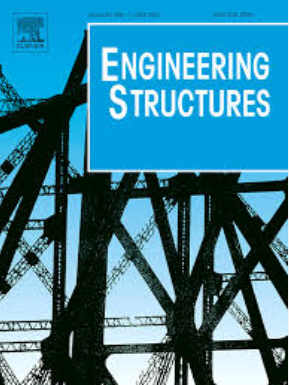A DSF-net-based approach to dual-branch instance segmentation of weak bridge defects
IF 5.6
1区 工程技术
Q1 ENGINEERING, CIVIL
引用次数: 0
Abstract
Restricted by the uniqueness of bridge structures and safety requirements of imaging devices, there are numerous challenges in computer vision-based identification of structural surface bridge damage, such as weak defects segmentation, background noise interference, and the difficulty of simultaneously detecting bridge defects with varying morphologies. To address this issue, an efficient dual-branch instance segmentation method for weak defects detection, called DSF NET, has been proposed. Considering the morphological differences among different bridge defects, the Multi-Defect Classification (MDC) Module is introduced to classify the defects into thin tubular defects, which are addressed with dynamic snake convolution(DSConv) for flexible feature extraction, and common small defects. Moreover, the problem of high proportion of weak defects and the serious imbalance of defect categories, a new multi-scale feature fusion network (IFPN) is proposed to enhance the ability to process detailed information of bridge defects. Additionally, Convolutional Block Attention Module(CBAM) was applied to enhance local features and suppress background noise and useless information. After training and optimization of DSF NET, the Mean Average Precisions for masks of tubular defects and common small defects have improved from 5.26 % to 34.92 % and 20.75–77.81 % respectively. Results demonstrate that integrating DSConv into the convolution blocks at lower stages significantly improves the performance of the model, markedly enhancing defect detection capabilities. The proposed method has the potential to provide an intelligent tool for weak bridge defect detection.
求助全文
约1分钟内获得全文
求助全文
来源期刊

Engineering Structures
工程技术-工程:土木
CiteScore
10.20
自引率
14.50%
发文量
1385
审稿时长
67 days
期刊介绍:
Engineering Structures provides a forum for a broad blend of scientific and technical papers to reflect the evolving needs of the structural engineering and structural mechanics communities. Particularly welcome are contributions dealing with applications of structural engineering and mechanics principles in all areas of technology. The journal aspires to a broad and integrated coverage of the effects of dynamic loadings and of the modelling techniques whereby the structural response to these loadings may be computed.
The scope of Engineering Structures encompasses, but is not restricted to, the following areas: infrastructure engineering; earthquake engineering; structure-fluid-soil interaction; wind engineering; fire engineering; blast engineering; structural reliability/stability; life assessment/integrity; structural health monitoring; multi-hazard engineering; structural dynamics; optimization; expert systems; experimental modelling; performance-based design; multiscale analysis; value engineering.
Topics of interest include: tall buildings; innovative structures; environmentally responsive structures; bridges; stadiums; commercial and public buildings; transmission towers; television and telecommunication masts; foldable structures; cooling towers; plates and shells; suspension structures; protective structures; smart structures; nuclear reactors; dams; pressure vessels; pipelines; tunnels.
Engineering Structures also publishes review articles, short communications and discussions, book reviews, and a diary on international events related to any aspect of structural engineering.
 求助内容:
求助内容: 应助结果提醒方式:
应助结果提醒方式:


